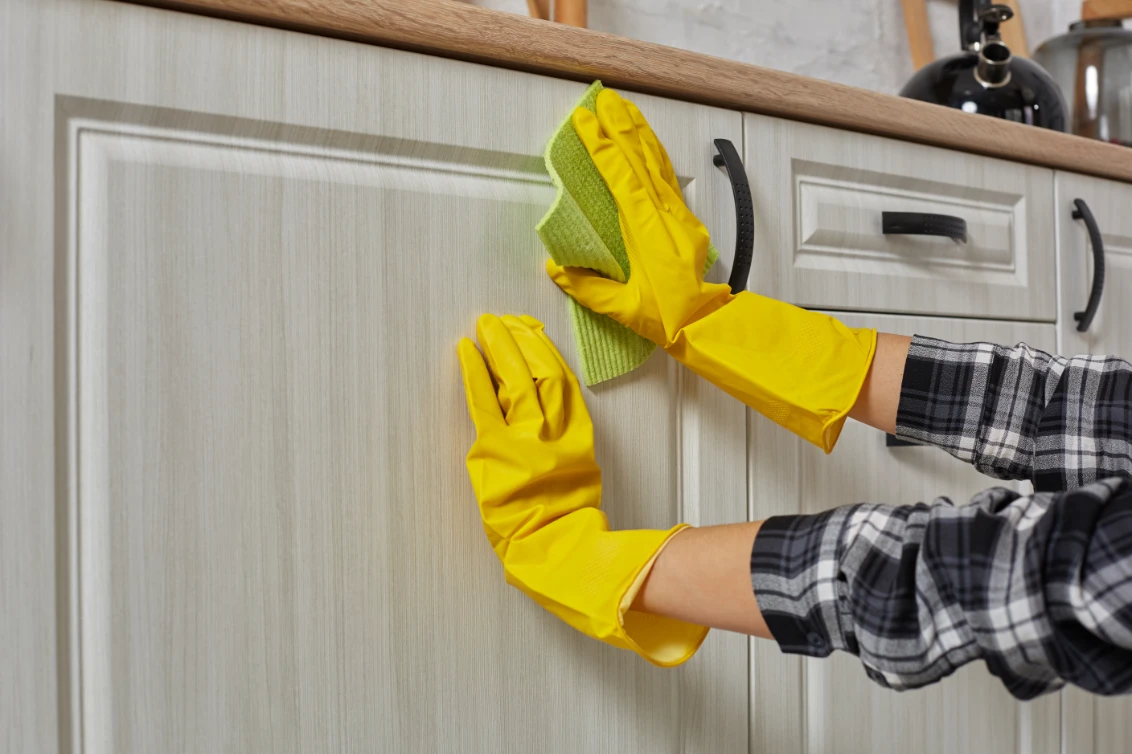No one wants gnats inside their home or office. These tiny flying bugs breed fast and are hard to control once they take over. Whether you’re facing a few stragglers or a full gnat infestation in your house, you need to act fast. Let’s learn how to get rid of gnats quickly and keep them from coming back.
The first step in getting rid of gnats is figuring out their source. Houseplants, filthy drains, wetness, and rubbish are all things that gnats adore. They are frequently seen next to garbage cans, fruit dishes and even your sink.
Here’s how you need to get started:
- Remove food sources. Seal fruit in containers. Empty your trash daily.
- Dry out wet areas. Fix leaks under sinks and wipe down counters.
- Use traps. Place a bowl with apple cider vinegar and a few drops of dish soap. The gnats get drawn in and drown.
- Use a gnat killer spray. These sprays target flying insects and help stop new gnats from hatching.
- Clean drains. Pour a mixture of boiling water, vinegar, and baking soda down kitchen and bathroom drains.
When wondering how to kill gnats, quick action and consistency matter the most. Don’t let your guard down once you see a few dead bugs. Gnats lay hundreds of eggs at a time, so you need to keep your cleaning routine strong for a few weeks.
How to Get Rid of Gnats in Plants
Houseplants are a favorite spot for fungus gnats. They lay eggs in moist soil, and the larvae feed on roots. If you love your plants, it’s important to act fast when you spot gnats buzzing around them.

Here’s how to get rid of gnats in plants:
- Let the soil dry. Fungus gnats need damp soil to survive. Water your plants only when needed.
- Top with sand. A layer of sand on the surface of the soil stops gnats from laying eggs.
- Use sticky traps. Yellow sticky traps attract adult gnats and help you monitor the problem.
- Use a gnat killer safe for plants. Some insecticidal soaps or neem oil sprays can kill larvae without hurting your plants.
- Repot if needed. If the infestation is severe, replace the soil with fresh, sterile potting mix.
Gnat infestations can destroy plant health if ignored. Watch for signs like wilting leaves and slowed growth, even if the soil looks healthy.
How to Get Rid of Gnats Inside the House
Dealing with gnats in the house is frustrating. They seem to come out of nowhere and stick around no matter what you do. Getting rid of gnats inside the house is about cleaning and trapping.
Follow these steps:
- Clean every surface. Wipe down kitchen counters, tables, and floors. Don’t leave crumbs or spills.
- Empty trash cans often. Keep lids tight.
- Store food properly. Use sealed containers.
- Check for leaks. Fix dripping faucets or pipes under sinks.
- Use gnat repellents. Natural options like essential oils (peppermint, lemon) work well. You can also use plug-in gnat repellents.
- Use indoor-safe sprays. If traps aren’t enough, you may need a spray designed for indoor pests.
If gnats keep coming back even after cleaning, you might have a deeper problem like sewer gnats or mold issues.
Where Do Gnats Come From?

Knowing where gnats come from helps you beat them before they become a big problem. Gnats are attracted to:
- Rotting food. Overripe fruit, dirty dishes, trash, and food left out.
- Moisture. Wet soil, leaky sinks, clogged drains.
- Organic matter. Mulch, compost piles, and plant debris inside or outside your home.
- Dirty drains. Sewer gnats, a type of gnat, breed in the slime inside drains.
Gnats often fly into homes through open doors or windows, especially during warmer months. Once inside, they find a place to breed and multiply fast.
How to Get Rid of Sewer Gnats
Sewer gnats (also called drain flies) live in the grime inside pipes and drains. You’ll usually find them in kitchens, bathrooms, and basements.
Here’s how to exterminate gnats that come from drains:
- Scrub the inside of the drains. Use a long pipe brush and cleaner to remove slime and buildup.
- Flush drains. Pour a mix of hot water and vinegar or bleach down the drain.
- Use drain gel cleaners. These products are made to stick to the sides of pipes and kill larvae.
- Keep drains dry overnight. After cleaning, avoid using the drain for a few hours to let treatments work.
If sewer gnats return after deep cleaning, it may be time to call for professional cleaning services to inspect for hidden plumbing problems.
When to Call Professional Help
 Sometimes, no matter how many traps or sprays you use, you can’t fully stop a gnat infestation in your house. That’s when it’s smart to bring in help.
Sometimes, no matter how many traps or sprays you use, you can’t fully stop a gnat infestation in your house. That’s when it’s smart to bring in help.
If you run a business, a commercial cleaning company can provide deep cleaning to tackle hidden gnat breeding grounds. Commercial cleaning services in Baltimore are trained to find the source and treat it properly.
If you need help at home, house cleaning services can do a thorough cleaning that includes drain treatments, trash removal, and air-quality checks.
At work, commercial cleaners make sure kitchens, bathrooms, and common areas stay clean and gnat-free. A trusted HVAC contractor can also check if your air system is contributing to moisture problems.
No matter what, hiring professional cleaning services gives you peace of mind that the gnats are gone for good.
Keep your home free of gnats!
Gnats are a small bug with a big impact. Whether you’re dealing with a few in your kitchen or a full gnat infestation in the house, taking action fast is key.
Use traps, clean often, dry wet spots, and treat your drains to keep your home free of gnats. If things get out of hand, call Interworld commercial cleaning company and ask for our professional cleaning services to help you take care of the problem.
We know how to get rid of gnats and help you to protect your home, plants, and even your business from these annoying pests. We keep you clean, dry, and help you to stay alert so the gnats will have no place to hide.




